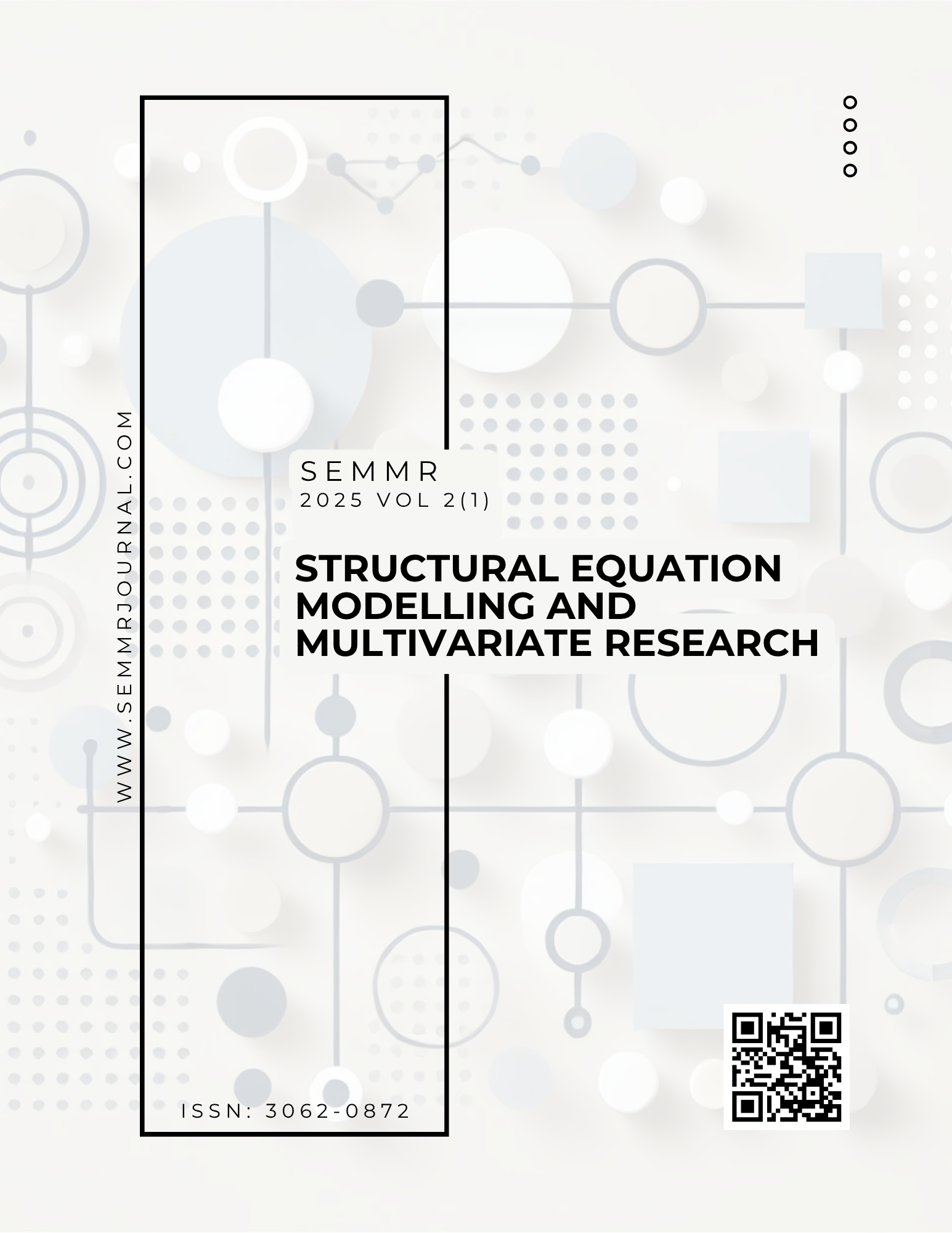The Effects of Multiculturalism, Intercultural Interactions, Tolerance, and Perceived Threat on Public Attitudes and Behaviors Towards Refugees
DOI:
https://doi.org/10.5281/zenodo.15744788Keywords:
Immigration, Syrian Refugee, Multicultural Ideology, Intercultural Contact, PLS-SEMAbstract
In the last century, significant migrations have occurred to neighbouring countries due to internal conflicts and upheavals in regions such as Africa, as well as in countries like Syria and Iraq, which have experienced civil wars or similar turmoil. The challenges that arise from these migrations, exacerbated by globalization, profoundly alter the political, social, economic, and cultural structures of the host regions, significantly impacting their stability and security. In recent years, Turkey has witnessed an unprecedented increase in the number of refugees due to the Syrian Civil War. According to official records, the number of refugees in Turkey has approached four million. As a result, refugees are in constant interaction with the local population across various environments. However, this interaction can sometimes lead to problematic areas and conflicts, driven by the negative attitudes and behaviors exhibited by both sides. Therefore, identifying the factors contributing to negative public attitudes and behaviors toward refugees is crucial for preventing such conflicts. This study explores the attitudes and behaviors of the local population towards Syrian refugees through a proposed structural model. The hypotheses and model fit were tested using Partial Least Squares Structural Equation Modeling (PLS-SEM). The original contribution of this study lies in the inclusion of the positive behavior variable as an intrinsic component of the theoretical model and in its multidimensional analysis of prosocial behaviors toward refugees. The findings indicate that higher levels of cultural acceptance and tolerance significantly enhance positive helping behaviors toward refugees.
Downloads
References
Aydin, H., Gundogdu, M. & Akgul, A. (2019). Integration of Syrian Refugees in Turkey: Understanding the Educators' Perception, Journal of International Migration and Integration, 20,1029–1040. https://doi.org/10.1007/s12134-018-0638-1
Baban, F., Ilcan, S. and Kim Rygiel, K. (2017). Syrian refugees in Turkey: pathways to precarity, differential inclusion, and negotiated citizenship rights, Journal of Ethnic and Migration Studies. 43(1), 41-57. https://doi.org/10.1080/1369183X.2016.1192996
Berry, J. W. (2006). Mutual attitudes among immigrants and ethnocultural groups in Canada. International Journal of Intercultural Relations, 30(6), 719–734. https://doi.org/10.1016/j.ijintrel.2006.06.004
Brown, R., & Hewstone, M. (2005). An integrative theory of intergroup contact. In M. P. Zanna (Ed.), Advances in experimental social psychology, 37, 255–343. San Diego, CA: Elsevier.
Coenders, M., Lubbers, M., & Scheepers, P. (2003). Majorities' attitudes towards minorities in (former) candidate countries of the European Union: Results from the Eurobarometer in candidate countries. Report for the European Monitoring Centre on Racism and Xenophobia.
Cohen, J. (1988). Statistical Power Analysis for the Behavioral Sciences. Lawrence Erlbaum Associates, Mahwah, NJ.
Çimen, L.K. and Quadir, S.E. (2018). Examination of University Students’ Attitudes Towards Syrian Refugees in the Context of Their Civil Participation. Journal of Human and Social Science Studies, 7(2), 1251-1273. https://doi.org/10.15869/itobiad.382502
Diker, N.P. and Karan O. (2021). The Social Exclusion Faced by Syrian Refugees and the Resistance Tactics They Develop: The Case of Ankara, Ankara Research Journal, 9(2), 281-321.
Dunn, K. (2003). Attitudes toward immigrants and immigration: An Australian perspective. Paper presented at, New directions, new settlers, new challenges: Building and enhancing communities symposium, Wellington, New Zealand.
Erdogan, M. M. (2015). Syrians in Turkey: Social Acceptance and Harmony. Istanbul Bilgi University Press, Istanbul: Istanbul Bilgi University.
Fornell, C. & Lacker, D.F. (1981). Evaluating structural equation models with unobservable variables and measurement error, Journal of Marketing Research, 18, 39-50.
General Directorate of Migration Management (2022). Foreigners under temporary protection of Syrian nationality. https://www.goc.gov.tr (Date of Access: October 20, 2022).
Gülyaşar, M. (2017). Syrians and Citizenship: An Assessment in the Context of Local Population and Syrian Asylum Seekers. International Journal of Society Researches, 7(13), 679-705. https://doi.org/ 10.26466/opus.341263
Hair, J.F., Ringle, C.M. and Sarstedt, M. (2011) PLS-SEM: Indeed a Silver Bullet. Journal of Marketing Theory and Practice, 19, 139-151. https://doi.org/10.2753/MTP1069-6679190202
Hair, J. F., Hult, G. T. M., Ringle, C. M., & Sarstedt, M. (2014). A primer on partial least squares structural equation modeling (PLS-SEM). Thousand Oaks: Sage
Henseler, Jörg, Christian M. Ringle and Marko Sarstedt (2015). A New Criterion for Assessing Discirimant Validity in Variance-Based Structural Equation Modeling. Journal of the Academy of Marketing Science, 43: 115-135. https://doi.org/10.1007/s11747-014-0403-8
Ipsos Mori. (2012). Living in England/Wales/Scotland/N. Ireland Today Survey 2012 Mainstage.
Özdemir, F., Malatyalı, M. K., & Sakallı, N. (2023). Anti-refugee attitudes towards Syrian people living in Turkey: Culture dimensions and motivational personal dispositions. International Journal of Intercultural Relations, 94, 101809. https://doi.org/10.1016/j.ijintrel.2023.101809
Questionnaire.https://www.europeansocialsurvey.org/docs/round6/fieldwork/united_kingdom/ESS6_questionnaires_GB.pdf (08.11.2017)
Pettigrew, T. F., & Tropp, L. (2000). Does intergroup contact reduce prejudice: Recent meta-analytic findings. In S. Oskamp (Ed.), Reducing prejudice and discrimination (pp. 93–114). Mahwah, NJ: Lawrence Erlbaum.
Podsakoff, P. M., MacKenzie, S. B., Lee, J. Y., & Podsakoff, N. P. (2003). Common Method Biases in Behavioral Research: A Critical Review of the Literature and Recommended Remedies. Journal of Applied Psychology, 88, 879-903. http://dx.doi.org/10.1037/0021-9010.88.5.879
Sarstedt, M., Ringle, C. M., & Hair, J. F. (2017). Partial Least Squares Structural Equation Modeling. In C. Homburg, M. Klarmann, & A. Vomberg (Eds.), Handbook of Market Research (pp. 1-40). Springer. https://doi.org/10.1007/978-3-319-05542-8_15-1
Stephan, W. G., & Stephan, C. W. (1985). Intergroup anxiety. Journal of Social Issues, 41, 157–175.
Stephan, W. G., Ybarra, O., Martínez, C. M., Schwarzwald, J., & Tur-Kaspa, M. (1998). Prejudice toward immigrants to Spain and Israel: An integrated threat theory analysis. Journal of Cross-Cultural Psychology, 29(4), 559–576. https://doi.org/10.1177/0022022198294004
Stephan, W. G., & Stephan, C. W. (2000). An integrated threat theory of prejudice. In S. Oskamp (Ed.), Reducing prejudice and discrimination (pp. 23–46). Hillsdale, NJ: Lawrence Erlbaum.
Tenenhaus, M., Esposito Vinzi, V., Chatelin, Y.-M., & Lauro, C. (2005). PLS path modeling. Computational Statistics & Data Analysis, 48(1), 159–205.
Türkiye Mülteciler Derneği (2022). Türkiye’deki Suriyeli Sayısı, https://multeciler.org.tr/turkiyedeki-suriyeli-sayisi/ (Erişim Tarihi: 1 Kasım 2022).
Voci, A., & Hewstone, M. (2003). Intergroup contact and prejudice toward immigrants in Italy: The mediational role of anxiety and the moderational role of salience. Group Processes and Intergroup Relations, 6(1), 37–54.
Yitmen, S. & Verkuyten, M. (2018). Positive and negative behavioural intentions towards refugees in Turkey: The roles of national identification, threat, and humanitarian concern, Journal of Community & Applied Social Psychology. 28, 230-243. https://doi.org/10.1002/casp.2354
Yitmen, Ş., & Verkuyten, M. (2018). Feelings toward refugees and non-Muslims in Turkey: The roles of national and religious identifications, and multiculturalism. Journal of Applied Social Psychology, 48(2), 90–100. https://doi.org/10.1111/jasp.12493
Ward, C. & Masgoret, A. (2006). An integrative model of attitudes toward immigrants. International Journal of Intercultural Relations. 30: 671-682. https://doi.org/ 10.1016/j.ijintrel.2006.06.002
Ward C. & Masgoret, A. (2008). Attitudes toward Immigrants, Immigration, and Multiculturalism in New Zealand: A Social Psychological Analysis. International Migration Review. 42(1): 227-248. https://doi.org/10.1111/j.1747-7379.2007.00119.x
Wetzels, M., Odekerken-Schrode r., G.,& van Oppen, C. (2009). Using PLS path modeling for assessing hierarchical construct models: Guidelines and empirical illustration, MIS Quarterly, 33(1), 177-195.
Downloads
Published
How to Cite
Issue
Section
License
Copyright (c) 2025 CANSU TİMUR

This work is licensed under a Creative Commons Attribution 4.0 International License.




